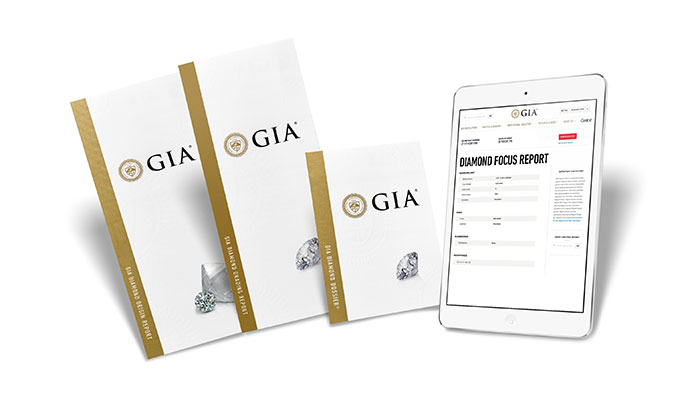Purchasing a diamond ring can be overwhelming. After you get through the education process of learning the diamond 4Cs there is still one more piece of the puzzle: understanding the difference between a grading report and an appraisal.
A diamond grading report, sometimes referred to as a certificate, is an official “blueprint” of a diamond. It will tell you the specific measurements and shape of your diamond, as well as point out the individual characteristics of your stone. One of the most widely recognized reports is the GIA Diamond Grading Report. Based on the International Diamond Grading System™ that GIA created nearly 60 years ago, the GIA Diamond Grading Report is an unbiased and scientifically-based assessment of your stone’s qualities. The report lets you know that your stone is in fact a diamond, and not some other material. It describes your diamond’s Clarity, Color, Cut, Carat weight, proportions and finish. The report also identifies any known treatments.
A grading report, or certificate, is not the same thing as an appraisal. An appraisal is an estimate of a diamond’s monetary worth. An appraisal assigns a value based on current market conditions and the quality of the diamond. A GIA report, on the other hand, provides an objective assessment of a diamond’s quality, information which appraisers often use in assigning value.
Though a diamond’s value may appreciate or depreciate over time, a diamond’s qualities are unlikely to change. To document those qualities, GIA has developed four different types of grading reports: Diamond Grading Report, Diamond Origin Report, Diamond Dossier® and Diamond eReport. Most appraisers and insurance agencies consider GIA reports to be the most accurate and highly regarded official documents of diamond quality.
GIA Diamond Grading Report
In addition to a diamond’s 4Cs information, the Diamond Grading Report provides a plotted diagram of the stone’s clarity characteristics and a graphic representation of its proportions, information which serves to identify the individual stone.
View sample report
GIA Diamond Dossier ®
The Diamond Dossier is available for diamonds that weigh between 0.15 and 1.99 carats. A more concise version of the GIA Diamond Grading Report, the Diamond Dossier includes a laser inscription of the diamond’s unique report number on the stone’s girdle rather than a plotted diagram of the clarity characteristics.
View sample report
GIA Diamond Origin Report
The GIA Diamond Origin Report includes a full 4Cs assessment with a plotted clarity diagram, geographic origin and GIA report number laser inscription. For loose, natural D-to-Z color diamonds only, weighing 0.15 carats or more that were submitted for rough analysis prior to cutting and polishing.
View sample report
GIA Diamond eReport
The eReport is a digital-only, paperless report that includes a graphic representation of the diamond’s proportions, and the added feature of a detailed face up image of the diamond captured during the grading process.
View sample report
All GIA grading reports are intended to be used as a source of accurate, unbiased and trustworthy information about a diamond’s quality. Remember, a diamond report is not a certificate or guarantee and does not indicate a diamond’s monetary value. While an appraisal does not guarantee a price that can be fetched on the market for a given stone, it is an indicator that helps consumers understand the potential value of their diamond. Both are important, but be sure to get a Diamond Grading Report before purchasing your very special diamond, so you are clear about what your diamond’s quality is.
Custom Field: Array
